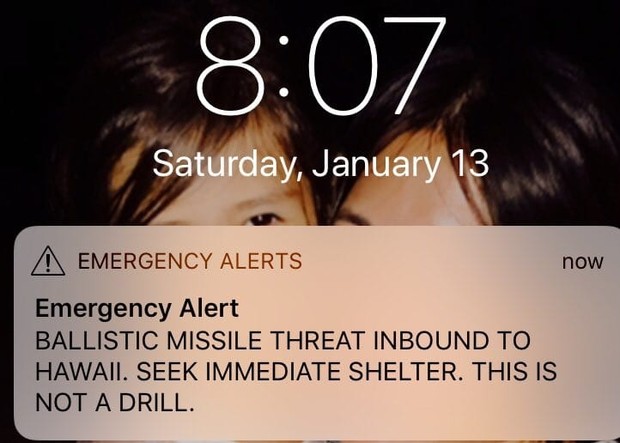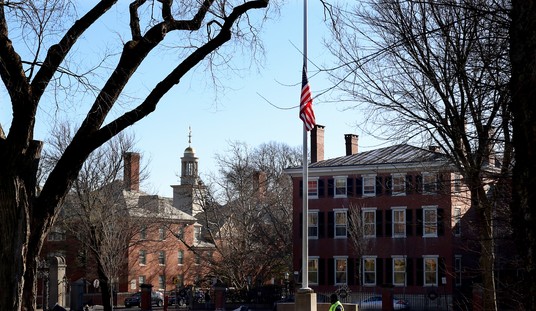
If you live in Hawaii you got a most disturbing on your smartphone a little earlier today

6 mins into our ride here in Hawaii and this is the text I just received? Not sure what to do. Sirens are going off. pic.twitter.com/D5USDAw3wp
— Emily Batty (@emilybatty) January 13, 2018
Ballistic missile threat inbound to Hawaii. Seek immediate shelter. This is not a drill. pic.twitter.com/tlJYNwCr1A
— Ryan Ozawa (@hawaii) January 13, 2018
Unsettling, no? Especially with the knowledge that Hawaii is well within range of Kim Jong Un’s nuclear weapons. But it was sorted out.
JUST IN: Hawaii Emergency Management Agency tweets there is no missile threat to Hawaii, after residents allegedly received emergency alert warning of an incoming ballistic missile. pic.twitter.com/QgXfpOiBaf
— ABC News (@ABC) January 13, 2018
HAWAII – THIS IS A FALSE ALARM. THERE IS NO INCOMING MISSILE. THE ALERT WAS SENT OUT INADVERENTLY. I HAVE SPOKEN TO HAWAII OFFICIALS AND CONFIRMED THERE IS NO THREAT. pic.twitter.com/hwRGct2aTa
— Rep. Tulsi Gabbard (@TulsiPress) January 13, 2018
According to various, seemingly valid Twitter reports, the Hawaii emergency management agency was doing drill and someone inserted an exercise message into the actual emergency warning system.
This kind of thing happens. Often real and exercise activities are carried on side by side and exercise message traffic slipping into the wrong channel is not unknown. Still a little unnerving to the livestock but no-harm-no-foul.
https://twitter.com/Breaking911/status/952257989339119616
This was my phone when I woke up just now. I'm in Honolulu, #Hawaii and my family is on the North Shore. They were hiding in the garage. My mom and sister were crying. It was a false alarm, but betting a lot of people are shaken. @KPRC2 pic.twitter.com/m6EKxH3QqQ
— Sara Donchey (@SaraDonchey) January 13, 2018
Or, if you are of a conspiratorial bent, you may wonder if it was deliberate.
Indeed, North Koreans see the US-ROK exercises as anything but routine; to the contrary, there was a sense among them that the Pentagon has launched the contact reconnaissance phase of a military operation it is planning to undertake on the peninsula. They noted that the geographical features of the Korean Peninsula provide no opportunity for the gradual, methodical buildup of troops to create a superior strike force—as was the case before the US attacked Iraq—and that North Korea would immediately notice such actions and naturally regard them as a casus belli. In their eyes, the Pentagon is rehearsing elements of a coordinated military operation one step at a time. The three aircraft carrier strike groups that are operating in Korea’s East Sea, as well as many other operations, were not just a show of force.
The same is true, they argued, about the latest US-South Korean air exercise Vigilant Ace, which involved 230 aircraft and a large number of varied types of stealth aircraft. The deployment for the first time of so many stealth airplanes looks especially ominous from the North Korean perspective against the backdrop of recent US-ROK exercises practicing decapitation strikes against Kim Jong Un in a first strike using ground, naval, air and special operations forces. These, and many other new elements that have appeared in drills over the past several months, have elicited growing concern that different elements of a combined arms operation against North Korea are being methodically rehearsed and that “zero hour,” as they put it, is not too far away.
What better way to rattle the chains in Pyongyang than to let them know that Hawaii is preparing for a ballistic missile attack?













Join the conversation as a VIP Member